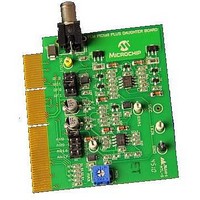AC164142 Microchip Technology, AC164142 Datasheet - Page 22

AC164142
Manufacturer Part Number
AC164142
Description
Consumer-band BPSK 7.2kbps PLM PICtail Plus Daughter Board Other
Manufacturer
Microchip Technology
Series
PICtail™ Plusr
Specifications of AC164142
Kit Application Type
Communication
Silicon Family Name
DsPIC
Kit Contents
2x Power-Line Soft-Modem PICtail Plus Daughter Boards, 2x High Voltage Adapter Cables, Info Sheet
Features
Operates On 5V And 9V
Rohs Compliant
Yes
Processor To Be Evaluated
dsPIC33F
Processor Series
dsPIC33F
Operating Supply Voltage
5 V, 9 V
Featured Product
AC164142 PICtail⢠Plus Daughter Board
Main Purpose
Interface, Power Line Transceiver
Embedded
No
Utilized Ic / Part
-
Primary Attributes
AC Power Line Transceiver, BPSK 7.2 Kbps
Secondary Attributes
Requires Explorer 16 Boards
Lead Free Status / Rohs Status
Lead free / RoHS Compliant
Available stocks
Company
Part Number
Manufacturer
Quantity
Price
Company:
Part Number:
AC164142
Manufacturer:
MICROCHIP
Quantity:
12 000
Part Number:
AC164142
Manufacturer:
BOARD
Quantity:
20 000
Consumer-band BPSK 7.2 kbps PLM PICtail™ Plus Daughter Board User’s Guide
DS70656A-page 22
PLM_MOD_IMP
This setting selects the number of OC channels dedicated for PWM-based signal
generation. Available options are:
• MOD_DDS: Directly calculates sine samples. No real-world output (for
• MOD_PWM: Uses single OC channel (not recommended)
• MOD_2PWM: Uses two OC channels
• MOD_4PWM: Uses four OC channels (default)
PLM_SOFT_AGC
This setting enables software automatic gain control. In most cases it should be
enabled. It may be disabled if the hardware gain guarantees that the working signal will
always touch power supply rails. If the input signal is small and the software AGC is
disabled, the Costas loop will not get enough feedback and the digital PLL may fall out
of synchronization.
PLM_COSTAS_FB
This setting allows the selection of a Costas loop feedback filter implementation. The
filter is actually implemented as a regulator. Three options are available:
• direct (equivalent to a P controller)
• PI
• PID
Tests show that the PI implementation brings the best performance. The proportional
term is responsible for the phase synchronization, while the integral term allows
tracking in the event of a constant frequency offset.
3.1.4
The modem API allows for very low level access to the modulator and demodulator
code. The application communicates with the modem on a buffer level and the modem
itself does not impose any buffer sizes, frames or protocols. All of these features can
be freely implemented in the higher layers. All low-level API functions are declared in
the header file (
are available:
plm_mod_start()
This function starts the modulator and configures the Output Compare channel(s),
starts Timer2 and enables the Timer2 interrupt. It is mandatory to call this function
before any calls to plm_xmit() are made.
plm_demod_start()
This function starts the demodulator and configures the selected ADC channel, starts
the timer that triggers ADC conversions and optionally enables a DMA channel to ser-
vice the selected ADC input. Either DMA or ADC and timer interrupts get enabled. It is
mandatory to call this function before any calls to plm_recv() are made.
plm_demod_sync()
This function forces a demodulator resynchronization and may be called in cases when
the demodulator keeps indicating bit and byte synchronization, but higher protocol lay-
ers decide that the patterns received do not form valid frames, thus suggesting that the
byte synchronization is misaligned.
demodulator testing with internal loopback)
API Functions
...modem\common\plm.h
) and are C-callable. The following functions
© 2011 Microchip Technology Inc.












